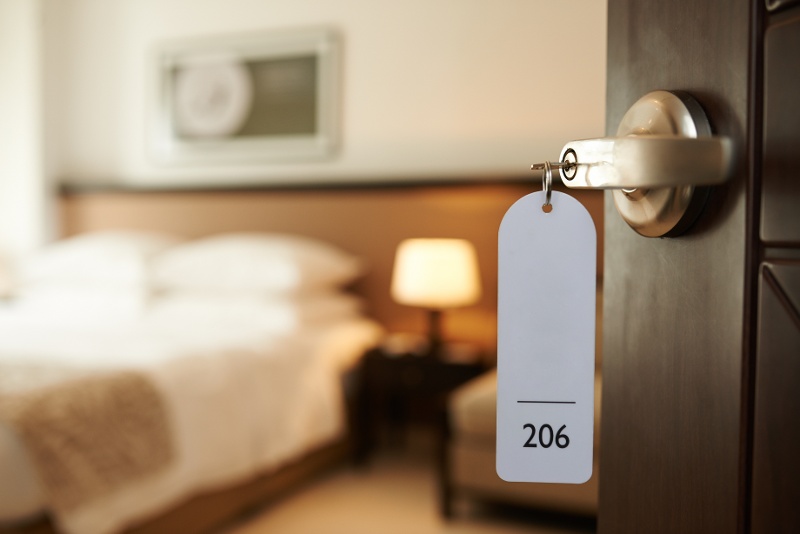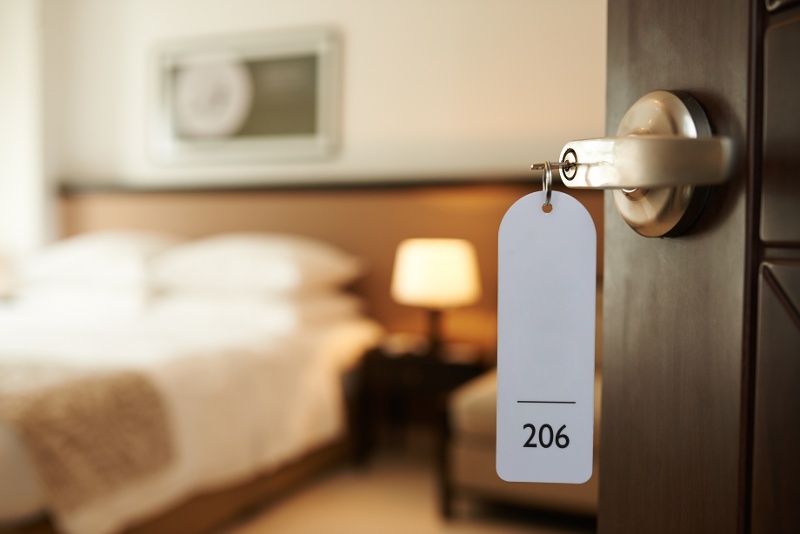
A hotel break is supposed to be a memorable experience and occasion for people to look back fondly on, and for the majority of the time this is the case. Be it a hotel-based getaway to somewhere exotic, far-flung and most importantly, sunny and hot, or a far less tropical affair much closer to home in a traditional bricks and mortar establishment (although equally as luxurious in an altogether different way) located somewhere quintessentially English and rural. And every other option discovered in-between, of course. But then sometimes hotel breaks can go tragically wrong, with the main protagonist – believe it or not - being poor hygiene.
That’s exactly what happened to a couple who stayed in a historic and characterful hotel in Shropshire last summer, the legacy borne out of which proved fatal for Elaine Brown. Dating back to the 17th Century, Ludlow’s old coaching inn - ‘The Feathers’ - described itself as ‘The Most Handsome Inn, in the World’, yet it’s what guests didn’t see that has grabbed all the headlines this past 12 months. The black and white timbered hotel was found to have presented what health officials referred to as elevated levels of bacteria, with specific contaminants recorded as being legionella. Indeed, it was after contracting Legionnaires’ disease after her shorty stay at The Feathers that Brown succumbed to the potentially terminal illness.
The Feathers has since closed down in light of this devastating case, coupled with the fact that Shropshire Council and Public Health England confirmed that legionella had been exposed again, following further routine water sampling. In terms of how the victim initially contracted the serious lung infection, there are reasons to believe that showering in the guest’s hotel room was probably the most likely source of original exposure, as Legionnaires' disease can take root in the aftermath of inhaling even small droplets of contaminated water.
Like many public areas such as hospitals, swimming pools, gyms, care homes and don’t forget, numerous business premises themselves, hotels can prove a magnet for legionella bacteria to take root and prosper behind the scenes. Which is why it’s absolutely imperative – as this case alone has highlighted – that responsible parties put into place all the necessary protocols and practices to ensure that noted high-risk areas are constantly monitored. These measures should be rigorously enforced not just to protect guests and service users, but equally so employees who might find themselves just a susceptible in certain circumstances and environs. As we pointed out above, legionella spreads in a stealthy manner, and it’s vitally important that those tasked with protecting buildings against the seemingly covert manifestation of the bacterium are fully aware of its potency and prevalence from the outset.
So, Just What and Where Are These Legionella Danger Areas Typically Found in a Hotel or Leisure Centre’s Structure?
Predominantly we’re talking about cold water storage tanks or calorifiers, yet traces of bacteria are just as likely to be pinpointed in other more unseen junctures which serve a premises’ guests via points of direct contact (such as taps and shower heads). Namely a variety of outlets which comprise core parts of a water system, like for example dead legs and dead ends and pipework which leads to unoccupied rooms. Identifying key areas which pose a threat to health is one thing, but then acting on what’s revealed is the crucial bit and can, essentially, prove to be a matter of life or death. Being proactive rather than reactive often underpins a successful legionella strategy, and one whereby risks are kept to an outright minimum courtesy of those persons accountable adopting a zero tolerance policy.
The hospitality sector simply can’t afford to be complacent when it comes to legionella monitoring, control and management, as more often than not the infrastructure of such public amenities comprise of elaborate pipework; any section of which could offer the ideal breeding ground for waterborne contaminants such as legionella. Thriving in warm water systems (in particular temperatures of 20° to 45°C), legionella risks in hotels and leisure establishments are ramped up due to any number of potential outlets; from showers, taps and spas through to whirlpool baths, humidified food displays, cooling towers, air conditioning evaporative condensers and even ornamental fountains (the displacement of contaminated water is far greater in this situation)!
Underlying issues which could hasten the presence of legionella include unoccupied rooms, which on face value might seem a little odd makes sense when explained. In the hospitality industry it’s not unheard of for rooms to go unoccupied for a passage of time (reflected by seasonal changes in demand and/or off-season closures, while some are just more difficult to fill than others). Ergo the risk has to be both acknowledged and managed. The risks being stagnant water taking hold in unused pipework serving a particular room which hasn’t been facilitated for an undisclosed period, which subsequently leads to a proliferation of bacteria. The solution to this problem would be to flush the standing outlets on a regular basis and/or instigate a dedicated programme of water chlorination as a means of comprehensive disinfection. Conversely a significant guest turn-over can bring about contamination risks too, not least when a facility has already become infected unbeknownst to establishment owners and management teams.
This is why we can’t stress enough the importance of recruiting trained engineers with water treatment backgrounds to regimentally conduct water sampling tests and moreover see that tanks, pipes and outlets remain free of contaminants and that the water source is continually safe and hygienic for end users and anyone else who comes into direct contact with public-facing assemblage. Remits also typically extend to showerhead sterilisation, TMV servicing, hot and cold water tank cleaning together with a raft of other vital tasks.
Fundamental Protocol to Eliminate Legionella Risk
- Ensure stored water temperature are not between temperature ranges whereby legionella habitually flourishes
- Routine disassembly and disinfection of showerheads and faucets
- Keeps shower heads (and taps) clean and scale-free
- Ensuring that hand-dryers and humidifiers are safe to use
- Regularly inspect, clean and disinfect all water filters, cooling towers, water storage tanks and pipes
- Implement monitoring programme for your domestic water system and any other risk systems, such as spa pools.
- Ensure taps in unoccupied rooms have been run at least once a week
- Have a valid legionella risk assessment in place, with regular reviews
What Might Happen Should You Fail to Meet Legionella-preventing Criteria?
Neglecting your duties and ultimately failing to comply with legionella legislation will result in prosecution, just as it did for The Feathers hotel, which was brought to account for the lapse in health and safety protocol that led to the death of a guest. When once these sums of money amounted to tens of thousands of pounds, in more recent times fines have been far more substantial for guilty parties, with security firm G4S Cash Solutions being dealt a £1.8 million financial blow by Harlow Council, after they were found to be operating what legal teams described as ‘sub-par policies, training, monitoring and testing for legionella on the business’ premises in Essex.’






